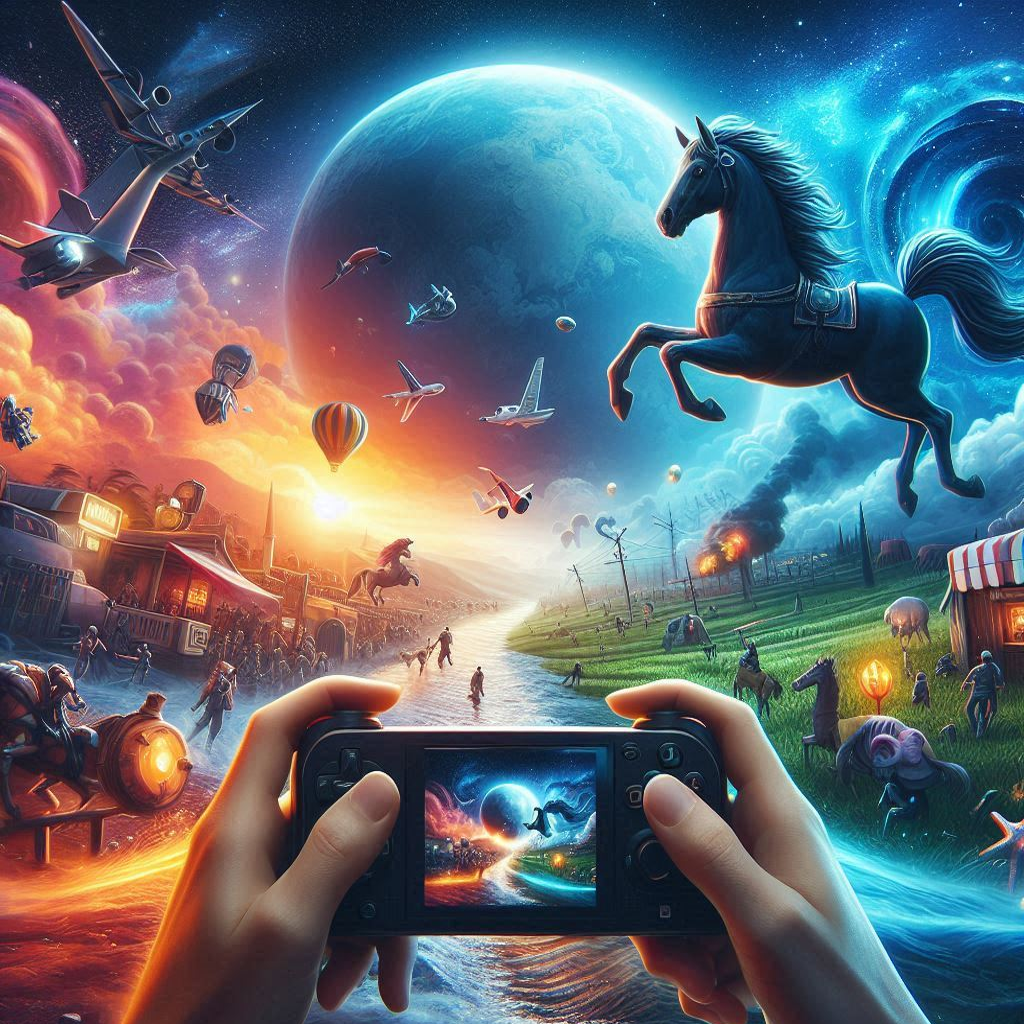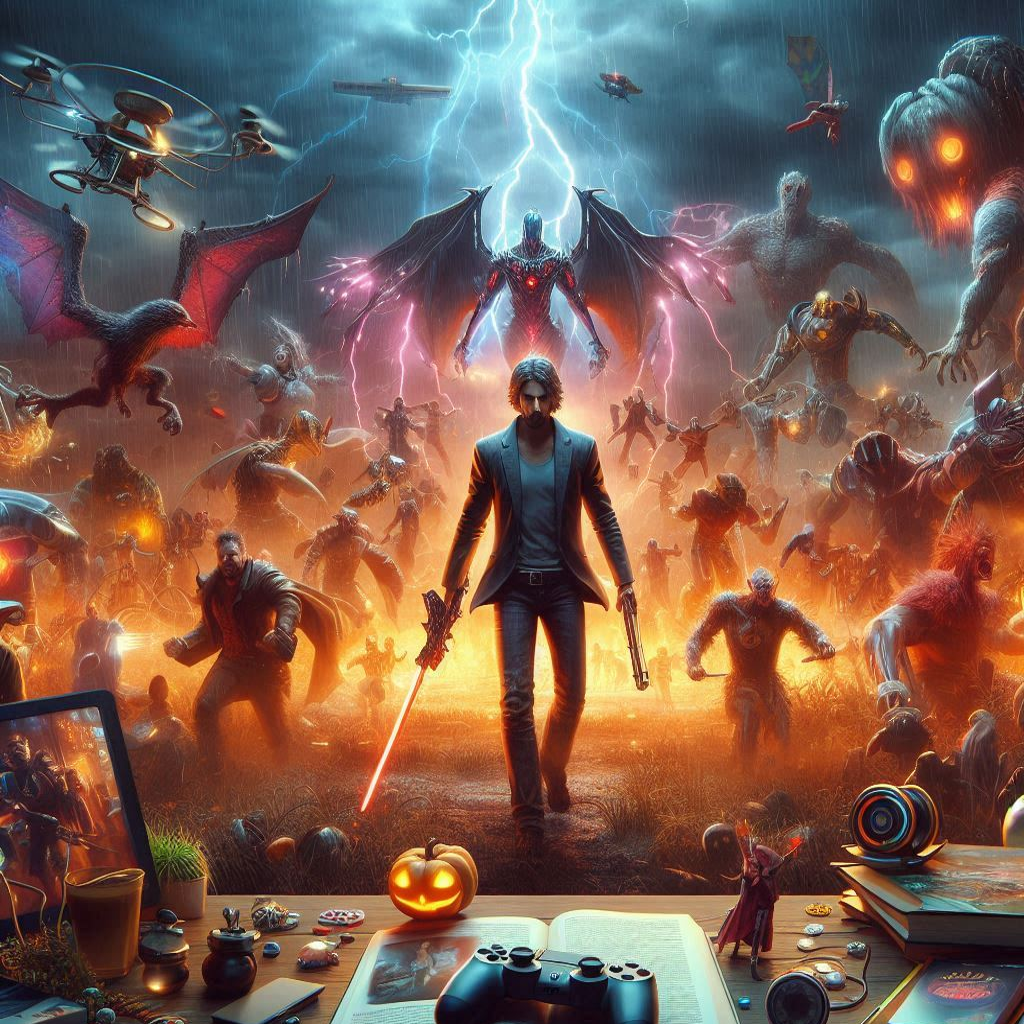Free-to-play (F2P) games are changing the way we think about fun and entertainment online. These games are free to download and play, which means anyone can join in! You don’t have to spend money to start having fun. Instead, most of these games make money by selling special items or features that help players progress faster or look cooler. This is called microtransactions.
One of the coolest things about F2P games is that they build huge communities. Players can team up with friends or even meet new ones. This social part makes the games more exciting and keeps players coming back for more. It also allows for player feedback, which means developers can make the games better based on what players want.
The rise of mobile devices has also helped F2P games grow. Now, you can play your favorite games anywhere and anytime! This convenience means more people are playing games than ever before, making the online entertainment world even bigger.
Some popular examples of F2P games are Fortnite, PUBG, and Candy Crush. Each of these games has millions of players and is always updated with new content. This keeps the games fresh and fun.
As F2P games continue to develop, they could lead to new kinds of entertainment like virtual concerts or interactive storytelling. The future looks bright for online fun, and F2P games are at the heart of it!
Glossary:
Free-to-Play (F2P): A type of game that you can play for free, but may offer extra features or items for money.
Microtransactions: Small purchases made in a game to buy extras or special items.
Community: A group of players who interact and play together in a game.
Developers: People or companies that create and update video games.
Mobile Devices: Handheld gadgets like smartphones and tablets that allow you to play games on the go.
Understanding Free-to-Play Games
Free-to-Play (F2P) games are video games that are available to play without an initial purchase. Instead, they often generate revenue through in-game purchases. This business model has transformed the way games are made and enjoyed, shaping the future of online entertainment.
Key Terms Explained
- Free-to-Play (F2P): A gaming model where players can download and play the game at no cost, but may pay for additional content or features.
- Microtransactions: Small payments made by players to purchase virtual goods or enhancements within a game.
- DLC (Downloadable Content): Additional content created for a game that can be downloaded separately, often requiring payment.
- Paywall: A restriction where certain in-game features are only accessible to players who make a payment.
The Rise of Free-to-Play Games
Over the past decade, F2P games have gained immense popularity. According to a recent study, “Free-to-play games accounted for more than 80% of mobile game revenue in 2022.” This shows how significant F2P games have become in the gaming industry.
Advantages of Free-to-Play Games
- Accessibility: Players can try out games without financial commitment, attracting a larger audience.
- Community Engagement: F2P games often have vibrant communities where players can interact and build friendships.
- Regular Updates: Developers tend to release frequent updates and new content to keep players engaged.
Challenges in Free-to-Play Games
While there are many advantages to F2P games, they also present challenges:
- Pay-to-Win Dynamics: Some players may feel pressured to spend money to compete effectively, which can create frustration.
- Game Balance: Developers must continually adjust gameplay to ensure fairness among paying and non-paying players.
- Player Retention: Keeping players engaged is crucial as many may abandon the game if they feel that progress requires too much investment.
Quote from Industry Leaders
Game developers often face challenges in creating a fair and engaging experience. One developer notes, “Balancing fun and monetization in free-to-play games is a constant uphill battle.”
Future Trends in Free-to-Play Gaming
As technology evolves, so does the F2P model. Here are some trends to watch:
| Increased Personalization | Games will use AI to tailor experiences based on player preferences. |
| Cross-Platform Play | More games will allow players on different devices to play together. |
| Social Features | Enhanced social interaction tools will foster community building. |
Quote on Future Directions
As the gaming landscape changes, industry experts weigh in: “The future of gaming will increasingly rely on creating shared experiences that bring communities together.”
Solutions for Common Challenges
While F2P games offer exciting prospects, addressing their challenges is vital for sustained success:
- Fair Monetization Practices: Developers can focus on cosmetic purchases rather than pay-to-win options.
- User Feedback: Listening to players and adjusting game mechanics can enhance satisfaction.
- Building Value: Offering substantial and engaging content for free can boost player enjoyment and retention.
Final Thoughts on Free-to-Play Games
Free-to-Play games are transforming the online entertainment industry. By creating engaging, accessible, and community-driven experiences, they cater to diverse audiences while navigating the challenges of monetization and player engagement. As development continues, the focus will likely be on creating fair, fun, and enriching experiences for all gamers.
What are Free-to-Play (F2P) games?
Free-to-Play games are online games that can be downloaded and played without any initial cost. They often generate revenue through in-game purchases, advertisements, or premium features.
How do Free-to-Play games differ from traditional games?
Unlike traditional games that usually require a one-time purchase, F2P games allow players to enjoy the game for free while providing optional purchases that enhance the gaming experience or speed up progress.
What impact do F2P games have on the gaming industry?
F2P games have significantly changed the gaming landscape by making gaming accessible to a broader audience. This model has led to increased engagement, allowing developers to create more diverse content that appeals to various demographics.
Are Free-to-Play games sustainable over time?
Yes, many F2P games have demonstrated sustainability by continuously engaging players with regular updates, events, and seasonal content, which helps cultivate a loyal player base.
What role do microtransactions play in F2P games?
Microtransactions allow players to purchase virtual goods or currencies within the game. These transactions support developers financially while providing players with options to enhance their gameplay experience without mandatory fees.
Can Free-to-Play games be as high quality as paid games?
Absolutely. Many F2P games feature high production values, engaging gameplay mechanics, and compelling storylines, rivaling those of traditional pay-to-play titles.
How do F2P games affect player behavior?
F2P games can shape player behavior by encouraging social interactions, competition, and community building. The accessibility of these games often results in more diverse social dynamics among players.
Are there any downsides to Free-to-Play games?
Some players may experience frustration with paywalls or feel pressured to spend money to compete effectively. Additionally, the presence of advertisements can sometimes detract from the overall gaming experience.
What is the future of Free-to-Play games in online entertainment?
The future of F2P games looks promising, with advancements in technology allowing for even more immersive experiences. As the industry evolves, we can expect further innovations in gameplay, monetization models, and community engagement strategies.




